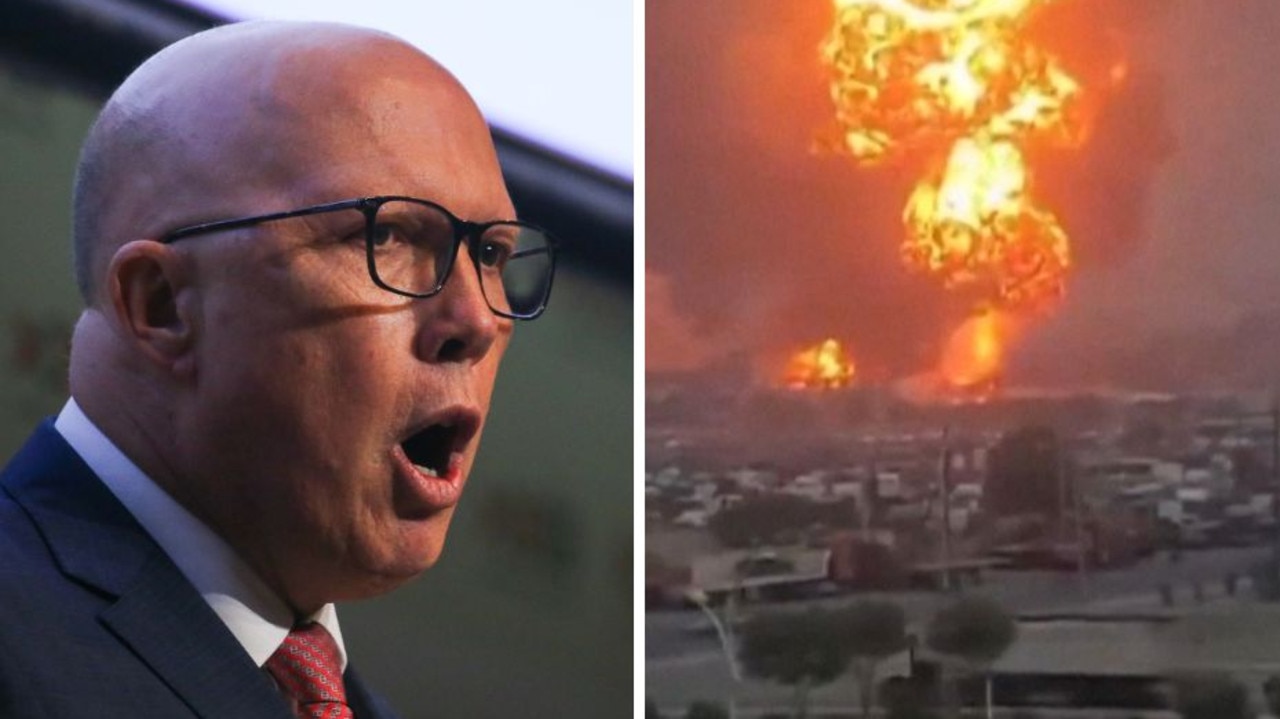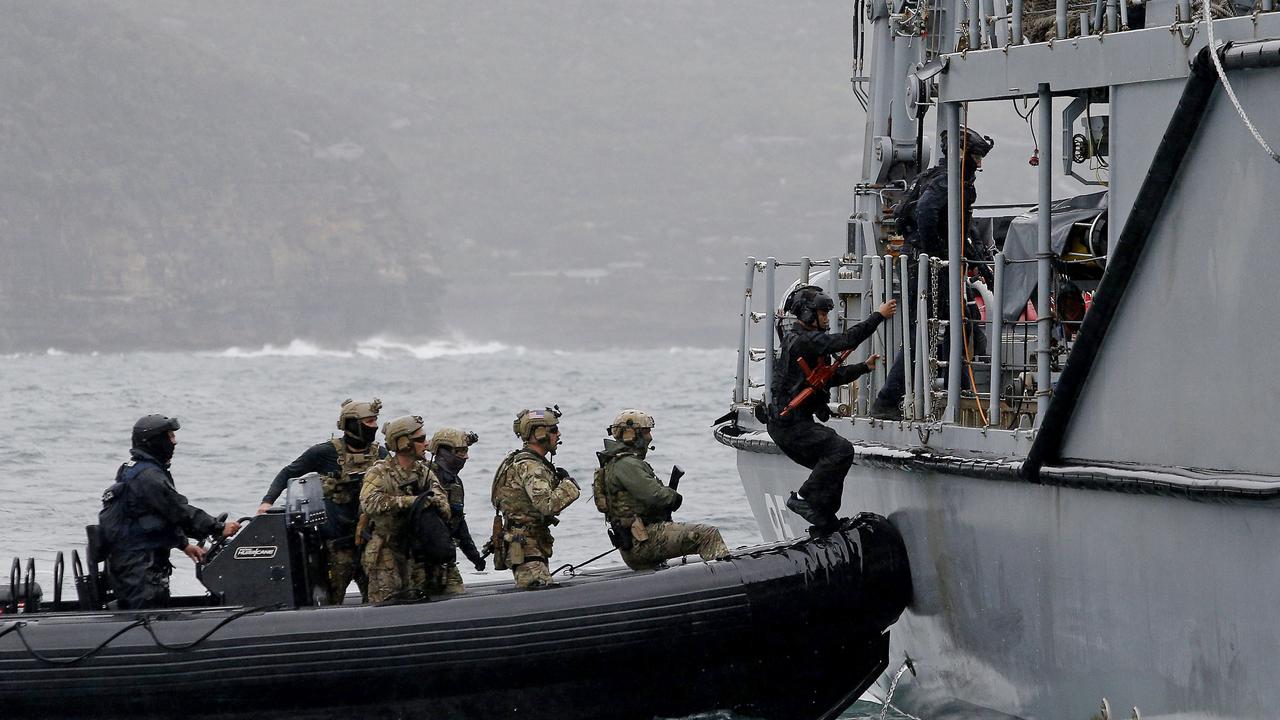Satellite photos reveal China’s terrifying nuclear plans
Satellite photos reveal China is secretly building new nuclear test pits in a remote desert mountain range. But Beijing insists it’s doing no such thing.

Satellite photos reveal China is secretly building new nuclear test pits in a remote desert mountain range. But Beijing insists it’s doing no such thing.
A remote desert site near Lop Nur in Xinjiang Province has drawn international attention over the past decade.
Satellites have caught China testing guided missiles against mock-ups of US aircraft carriers and warships. Enormous hangars for advanced balloons have been spotted. As have construction works for more than 100 new underground silos to house nuclear-tipped intercontinental ballistic missiles.
Now, near where China detonated its first nuclear warhead in the 1960s, massive new drilling projects point to the resumption of its testing program.
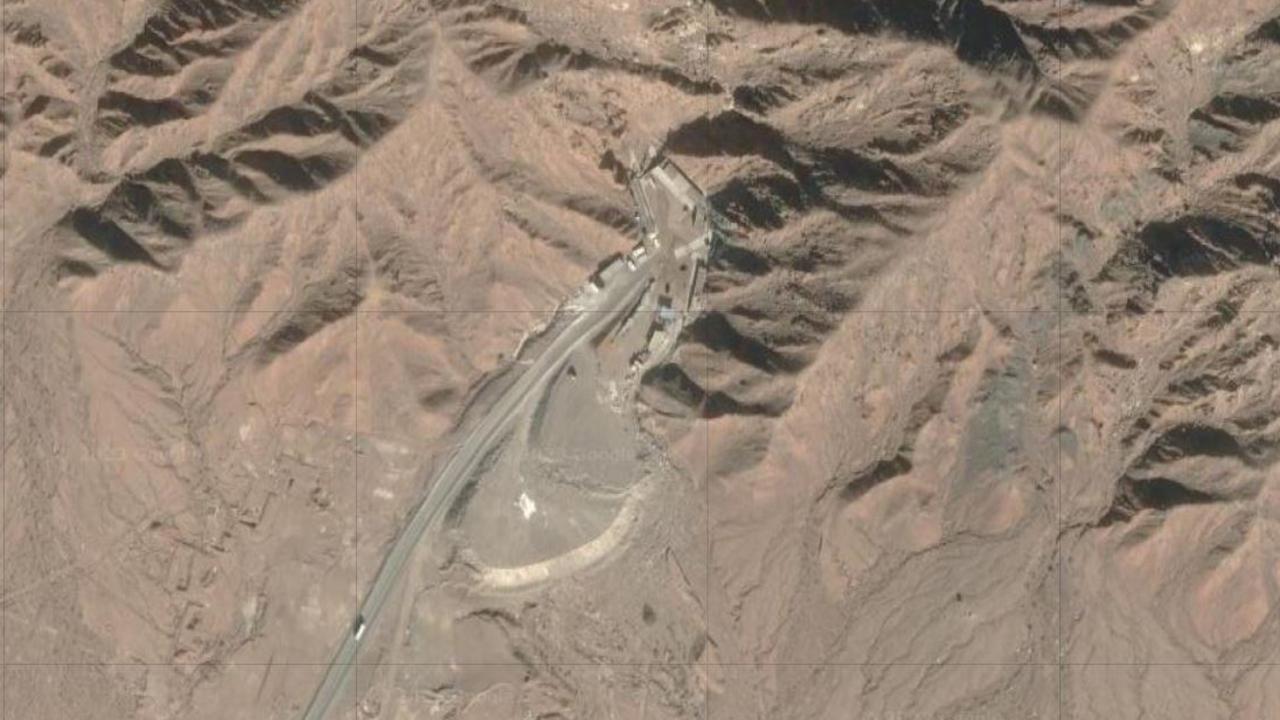
Johns Hopkins University analyst Dr Renny Babiarz told the New York Times (NYT) this week he had identified old test shafts being renovated as well as three new potential blast shafts.
“The overall indications are that they’re preparing to test,” he said.
The NYT says China’s Foreign Ministry dismissed the evidence as “clutching at shadows” and “utterly irresponsible” – insisting Beijing would “realise the noble aspiration of comprehensively banning and totally eradicating nuclear weapons.”
But its own nuclear experts contradict these claims.
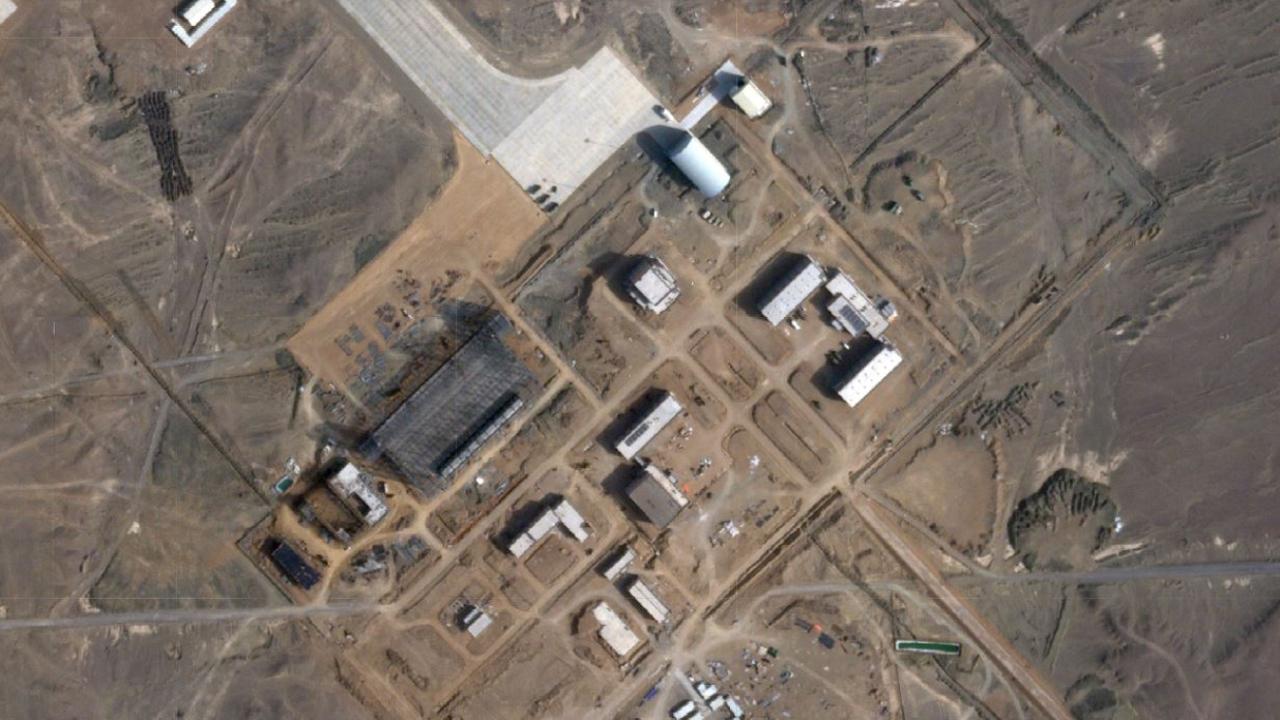
China Institute of Contemporary International Relations arms control researcher Guo Xiaobing recently wrote in The Diplomat that “China has every reason to worry about the credibility of its nuclear deterrence capabilities”.
He pointed to recent US efforts to renew and upgrade its ageing nuclear arsenal – at sea, air and on land. Its increasingly successful ballistic missile interception technology. And its moves to forward deploy nuclear warheads in the Pacific.
China’s own nuclear expansion, he says, is to ensure Beijing can deter Washington.
“It will be a grave challenge for China if the United States again uses nuclear weapons to bully China, as it did during the Korean War and the Taiwan Straits crises in the 1950s,” Guo concludes.
Nuclear arms race
Despite its public virtue signalling, China has undertaken a rapid build-up of the size and scope of its nuclear forces since Chairman Xi Jinping took power in 2012.
Shortly after overturning the Chinese Communist Party’s constitution last year for an unprecedented third term this year, he had several of his People’s Liberation Army Rocket Force commanders – the unit responsible for nuclear weapons – “disappeared”.
Speculation for the reason ranges from corruption scandals to a lack of preparedness – and an unwillingness to set up to a war footing.
But the expansion of the nuclear force continues apace.
“The Chinese government has accelerated its pursuit of a complete nuclear triad — encompassing land-, sea-, and air-launched nuclear weapons — including by developing new submarine- and air-launched ballistic missiles,” the authors of a Massachusetts Institute of Technology study report.

The US Department of Defence believes China currently has about 300 operational warheads. This is expected to climb to more than 1000 before the end of the decade.
“Rather than maintaining only enough forces to be able to retaliate if attacked — China’s policy for decades — many in the United States now fear China’s nuclear build out will give it offensive options as well,” the analysts argue in an explanatory essay published in Foreign Affairs.
“China has not been transparent about the purpose and goals of its nuclear build-up.”
‘Strategic breakout’
More nuclear warheads fitted to more types of weapons may be intended to give Chairman Xi a greater range of “options” for nuclear conflict.
One could be to produce a “nuclear shield” to deter response to any invasion of Taiwan or the East and South China Seas.
“In this view, by possessing a robust deterrent, China can initiate or escalate a conventional conflict against Taiwan while deterring US nuclear coercion or limited nuclear strikes, thereby increasing the odds of victory for Beijing,” the MIT analysts write.
But Chairman Xi may also hope “limited” tactical use of new low-yield nuclear warhead may give his forces the edge over US aircraft carrier battle groups and land-based facilities, such as at Okinawa, Japan.
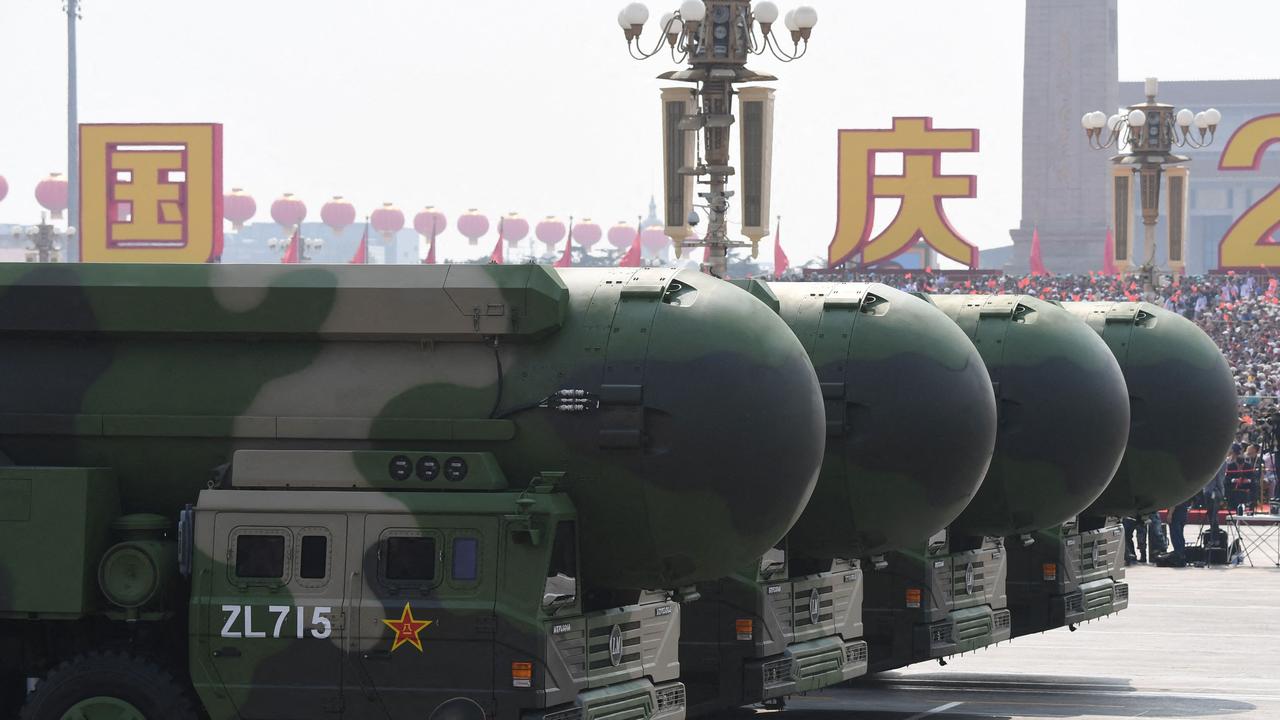
“Beijing could embrace this view, with the highly precise DF-26 theater-range missile offering a likely delivery vehicle for a lower-yield warhead,” the authors explain.
Behind it all, however, are significant changes to Pentagon nuclear warfare policy in recent decades. Increased ambiguity over a “first use” strike may have heightened Beijing’s fears.
“Chinese analysts are worried that the United States has lowered its threshold for nuclear use — including allowing for limited first use in a Taiwan conflict — and that the US military is acquiring new capabilities that could be used to destroy or significantly degrade China’s nuclear forces,” they write. “Thus, many Chinese experts have concluded that China needs a more robust arsenal.”
An end to restraint?
“The United States should consider nuclear first use if conventional forces cannot stop a Chinese invasion force from reaching Taiwan,” says Scowcroft Center for Strategy and Security Director Matthew Kroenig.
“While China espouses a declaratory policy of no first use of nuclear weapons, the US Department of Defense states bluntly that Chinese nuclear first use is possible,” he writes for the Atlantic Council think tank.
“China, for instance, could decide to employ a few nuclear weapons against critical nodes in the US Indo-Pacific defence architecture as an early war-winning strategy. Alternatively, if China was losing, CCP leadership could order a nuclear strike to stave off defeat and compel a settlement.”
This fear justifies Washington also considering a first strike, he insists: “Either side might rationally choose to gamble on nuclear escalation rather than risk defeat in such a high-stakes conflict.”
For this reason – and any like-for-like retaliatory response – he says the US should draw up a list of targets “on and off the Chinese mainland that would pose a setback to China’s war progress without making Chinese leadership fear for its own survival or for its nuclear force. These targets could include PLA Navy vessels; Chinese beachheads on Taiwan; or mainland ports, air bases, or headquarters supporting the invasion.”
Jamie Seidel is a freelance writer | @JamieSeidel




